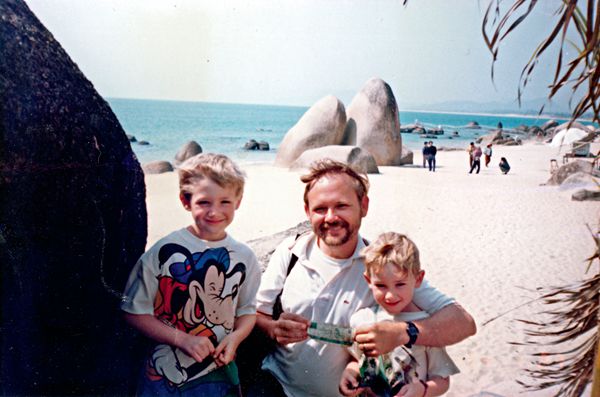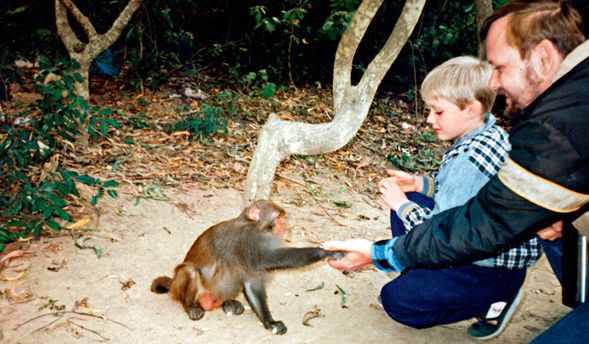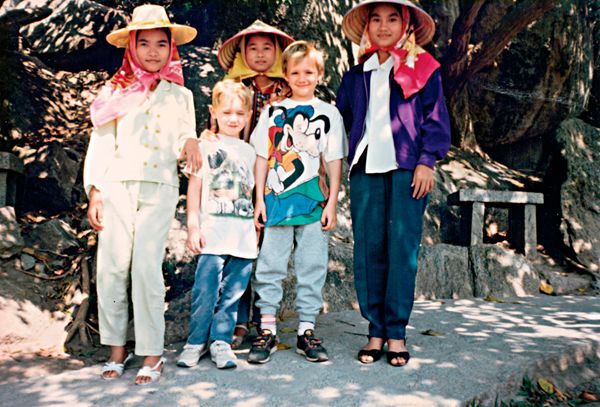BEFORE moving to China, my favorite hideaway was Hawaii, so I was delighted to learn China has its own Hawaii – southernmost Hainan Province.
A Han Dynasty (206 BC - AD 220) emperor established a military garrison on Hainan Island, the largest island of Hainan Province, in 110 BC. Sun Yat-sen recommended the establishment of a province in the region in 1906, but this did not happen until 1988, the year we moved to China.
Over three times the size of Hawaii’s largest island, Hainan Island’s natural and cultural diversity is breathtaking – white coral sand beaches, coconut plantations, hot springs, rare birds, and wildlife such as the clouded leopard.
Our first trip to Hainan was in January 1994, when we drove 6,000 km around South China to gear up for our 40,000 km drive to Tibet five months later. We packed our van with food, clothes, bedding and the boys’ schoolbooks and headed south. We soon realized why officials had discouraged us from making the trip.
China has excellent highways today, but in 1994 it was like driving on the moon. I averaged only 20 to 25 mph even on highways. In one village, I crawled so slowly over the potholes and ruts that a senior villager grinned as she passed me on her rusty bicycle.
We learned that privacy is elusive in a nation of 1.3 billion people. Even in the remotest woods, every time we set up camp, locals appeared seemingly from thin air and squatted in a circle around us – though at a polite distance – to watch us cook, eat and prepare for bed. When some obviously poor farmers shyly handed us fruit and vegetables I thought they were selling them, but not so. They were giving us the food because they thought our meal too austere. Although the driving was exhausting, I was re-energized daily by the hospitality and openness of the people we encountered.

Bill Brown and his two kids on the beach at Hainan’s beautiful coastal city of Sanya.
At 1 am on the third day, we rode the car ferry to Hainan Island and checked into Haikou’s Overseas Chinese Hotel. We looked forward to the first sleep in days in a warm bed – but it wasn’t warm. A cold front had hit Haikou (about 10 degrees centigrade), and the hotel had no heating because, as the shivering maid explained, “It’s never cold in Haikou.” So we warmed the room with Sue’s hair dryer.
The following day we spent 12 hours driving 170 km to Hainan’s first tourist resort, Dongjiao Coconut Plantation, where we stayed in a quaint Polynesian hut nestled midst coconut trees. Energetic grannies hawked fresh coconut juice, tousled our towheaded sons’ hair, and debated what province these strange Chinese were from. I was delighted to learn that many spoke the Minnan dialect common in Xiamen and Taiwan. When I spoke a few phrases in Minnan they acted like I was a long lost relative – albeit a strange one.

Bill Brown and his son feed a monkey on the highlands of Five Finger Mountain City.
After repairing a flat tire the next morning (we had four or five every week), I spent 11 hours driving the 160 km to Xinglong, and its “hot springs famous at home and abroad.” We stopped for lunch in a village where young women stood in the middle of the road waving towels to attract tour bus drivers to their little diner. Even the simplest dishes were expensive, but the portions were generous, the food delicious – and the bill was half what I expected! I told the girl she’d miscalculated and she grinned and said, “Menu prices are for rich tour groups, not for friends.” In appreciation, I took photos of the girls with our sons and later mailed them copies.
Our sons had long anticipated visiting Monkey Island, which we reached by ferry, but which today has China’s longest over-water cable car (2,138 meters). We thought we’d have to search for the macaques but they came after us instead. When we ran out of peanuts, the monkeys climbed over the boys’ jackets and pawed their pockets, scaring my son Matthew. We raced for the gate, macaques on our tail.
We bought two oysters from fishermen, who pried them open and presented each boy with a pearl, which I thought fitting. Whereas Americans say a child is “the apple of my eye,” Chinese say he or she is “a bright pearl in my palm.”

Bill Brown’s sons take a photo with two Hainan locals of the Li ethnic minority.
In Hainan’s beautiful coastal city of Sanya, the boys built castles of its fine white sand and we snorkeled amidst tropical fish in crystal blue waters. The highlight was chatting with fishermen, helping them haul in their nets and sampling their catch.
After Sanya, we went to see the deer in the Datian Nature Reserve and drove to the highlands of Five Finger Mountain City. There we spent three days enjoying lush forests and waterfalls, Li and Miao tribal villages, and the otherworldly Five Finger Mountain.
I was thrilled to learn that the world’s third largest crystal quarry was just north of Five Finger Mountain. I’ve collected rocks since I was six, so we sifted the red clay with trowels (which I keep on hand) and found several crystals for my 400 kg collection in Xiamen University.
I’d have happily stayed in Hainan a month but school was starting, so we returned to Xiamen via Guangxi and Chairman Mao’s birthplace in Hunan, following the Long March route for part of the trip – but I knew I’d return to Hainan many times.
And like Hawaii, Hainan has been in my blood ever since. Aloha, Hainan!
DR. BILL BROWN is a professor at the Xiamen University MBA Center and Academic Director of its OneMBA program.
